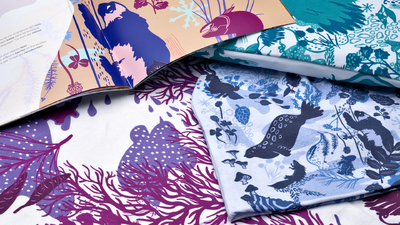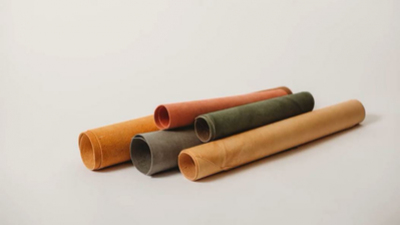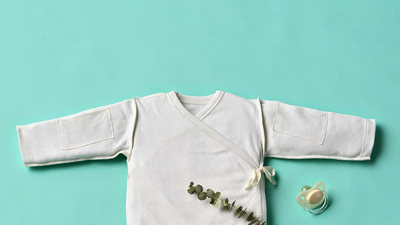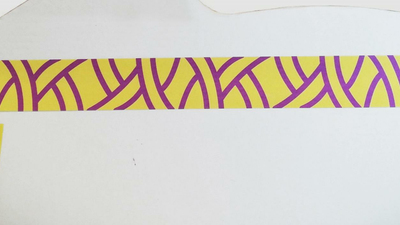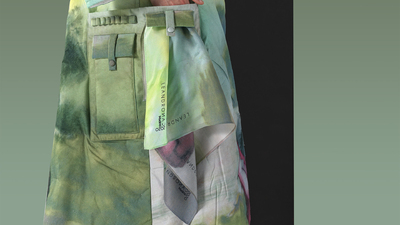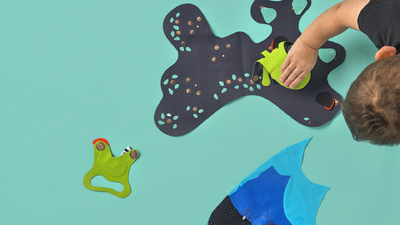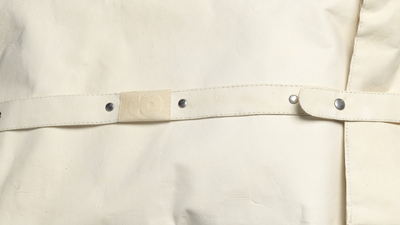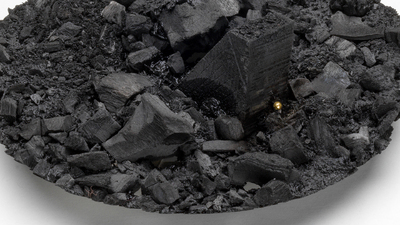Øjenfryd
Bushra Burge has been challenging aesthetics of VR related wearables since 2016, with elaborate textile manipulation covering headsets in her award-winning VR-couture piece Dark Matter and EU funded GhostNet to enable another narrative layer of immersion and internationally demonstrating, exhibiting, presenting and publishing papers on this. Emilie had embedded technology within conceptual ergonomic leather accessories and worked on several luxury craft award-winning wearables and experiential projects as well as with projects with Bushra.
While working on other projects together, the idea arose of combining Bushra’s many years of experience creating and demonstrating VR-haptic-costume experiences and demonstrating with Emilie’s high couture leathercraft and fashion accessory design skills.
Our own experiences of using VR and finding headsets ill-fitting and uncomfortable were echoed by many others, especially women and POC. Furthermore, we both thought the hard-plastic casings of headsets could be made more eco-friendly and visually appealing in a way that would strengthen user experiences of VR. These thoughts and ideas solidified into a desire to create more a comfortable wearable appropriate for a larger, more diverse user demographic added to previous findings from Bushra’s experience of adapting VR headsets to be more narrative driven and artistically expressive objects. Using sustainable luxury materials (like fish leathers from Iceland) was always one of our top priorities in terms of moving away from the plastic casings of current VR headsets. Material sustainability is something we have both been focused on in previous projects, so it was a very important element for us to incorporate as current headset materials aren’t exactly eco-friendly. It also provided us with a way of visually disrupting headset design and putting something very new and innovative out there – something which can generate attention and interest in our concept and mission to make VR more accessible and sustainable.
The birth of the project
At the heart of the project has been the research and direct user feedback regarding VR headsets gathered by Bushra throughout her many years of working with VR and implementing creative technologies embedded in sustainable couture and demonstrating and exhibiting internationally. This feedback came from demographically diverse user groups, both in terms of gender, ethnicity, and body type, and when quantified it painted a very clear picture of current headsets, both HTC and Oculus, being uncomfortable and a poor fit for many. This was especially true for many women including ourselves. Further research into headset design revealed that the basic headset design has not altered in any significant way since its development in the 1960s and is still very much a design by and for white men within the gaming sphere. This creates a barrier for other demographics to not only experience VR in a gaming context, but also to benefit from VR in its other uses (e.g. cultural, medical, artistical). The challenge is creating something which can be used with existing headsets as it has not been within the scope of this project to do a complete redesign of VR headset hardware.
The piece therefore needs to fit around existing headsets and meet the desired criteria for comfort, adjustability, a modular construction, improved aesthetics that support narrative concepts, and sustainable materials.
The creative process
Since redesigning a headset from scratch was never a possible scope for this project, as we have neither the engineering expertise or the funding available to big headset manufacturers, we focused on adapting a selected headset model, the Oculus Quest. To make it a strong proof of concept to represent our goals and belong in a gallery setting, we chose to centre the first piece around Nordic culture and materials. The choice seemed a very natural one to make since the Nordic countries are known for high gender equality, technical innovation, and for promoting sustainable agendas. And, since Emilie is Danish and familiar with Danish cultural institutions, it was the choice which would allow us to create the strongest project within the given timeframe. Once the cultural framework was in place, the development was an iterative loop between traditional materials, Norse myths and legends, Nordic aesthetics, and bringing all these into something digital, modern, and innovative.
The challenge was always to make the existing headsets look and feel less dehumanising and more familiar while telling a story of female empowerment and the old Norse legend of Kráka. As will resonate with many women today, she is asked to be opposing things at the same time: neither dressed nor undressed, neither fasting nor eating, and neither alone nor in company. She embodies contradictions and juxtapositions, and for this reason the ancient legend seemed fitting for a project which seeks to make the digital, synthetic, and dehumanising look natural, handcrafted, and inviting. Taking place on a beach, this legend also fit well with using sustainably processed fish leathers as the primary materials for the headset cover.
Our main challenge in throughout the development process was the length of the project. As we both have other fulltime work, having the project stretched out over a full year meant occasionally losing momentum. In spite of checking in with each other regularly, it has been challenging to keep long term focus on the development of the project. A shorter timeframe would likely have resulted in a much more streamlined development process without compromising the end result.
The collaboration
Although both partners are creative disruptors, we have quite different backgrounds, skills, and approaches. These differences, however, have been instrumental to bringing together both technical, narrative, and material aspects of the project into one finished product and concept. We have each contributed individual knowledge and experience to inform the realisation of the concept and the context/market within which it will exist.
The future
The global landscape of 2020 is very different from anything we anticipated when we began this project. Due to the CoVid19 pandemic and the immense consequences this will have on the global economy as well as perceptions of hygiene in social spaces - such as the galleries we intended to showcase the concept it – there is much we need to rethink and adapt. It was always our intention that this first concept be just one example of the kind of bespoke solutions we can offer in terms of both materials, cover design, and VR story. In this regard, there is no need to make changes for this target consumer group. However, the showcase and gallery settings will require unforeseen hygiene measures which will require further research and development. As will adapting the concept for a larger audience, perhaps through a subscription or extended service business model. That said, this is a project we will keep working on as we still believe it fills a gap in the market and can benefit many who would otherwise be hesitant to adopt VR.
The message
Having such a cultural mix between partners has been incredibly useful in especially the aesthetics and narrative choices we have made throughout. We both have very creative ways to work, but this was only strengthened by collaborating and by working with a cultural heritage narrative. Beyond the cultural, there was a very high degree of skill sharing involved in achieving our set objectives for the project. This allowed us to divide tasks and avoid situations in which we were both working on the same aspects of the project. The finished project has definitely become much stronger and more representative of our backgrounds and skills because of this, and we have both expanded our knowledge within each other’s fields of expertise.














